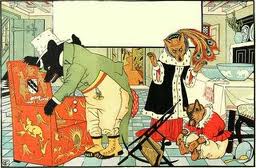
During the past century at least, folklorists have taken a serious look at fairy tales. The familiar tales from our childhood are not as simple or as childlike as we might think. It has been argued that the original context of traditional folk and fairy tales involved little or no differentiation between adults and children, and that these tales served predominantly to instruct and entertain adults. How significant was the role played by these tales in shaping social norms, values, aesthetic tastes and aspirations? Is there a difference between myth, fairy tale, and legend?
Folklorists have abandoned the search for origins, but there is still an effort to construct a “scene of origin”, a primal scene of narration, to explain how fairy tales came into being. It is usually pictured as peasants sitting around the fireside telling tales while they are repairing tools, patching clothes or spinning yarn. Many of today’s fairy tales can be, and have been extensively re-worked. They are stories about the quest for power, wealth, and romance, often moralistic in tone, but the characters are mostly opportunistic, they respond to circumstances as they happen, as children themselves often do..
Generally, they are beloved of children, for a variety of reasons, such as an aid to understanding, a mirror of their own emotional longings, for close family, happiness, for independence, to cope with change, or simply to survive, to live, to hope. Children love happy endings and resolutions in which the villain is converted, integrated into the family, or the triumph of good over evil.
There are many different theories concerning the fairy tale’s psychological meaning and value, but most start with the premise that the stories are symbolic expressions of the human mind and emotional experience. According to this view, proposed by Sigmund Freud, fairy‐tale plots and motifs are not representations of historical reality, but symbols of inner experience that provide insight into human behaviour. Consequently, the psychological approach to fairy tales involves symbolic interpretation, both for psychoanalysts, who use fairy tales diagnostically to bolster psychological theories, and for folklorists and literary critics, who use psychological theories to illuminate the symbols they draw from fairy tales. Recent research tends to discount these views. There is no evidence to support the psychoanalytic claim that fairy tales aid children in resolving psychological conflicts.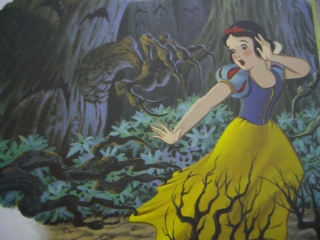
In the popular German series Weisheit im Märchen (Wisdom in the Fairy Tale, 1983–8), each volume is written by a different author who interprets a single tale to show readers how to achieve better relationships, self‐confidence, self‐acceptance, and other improvements in their lives. This seems to indicate at least, the adaptability of the original tales. If they help their readers who is to condemn them?
Carl Gustav Jung, who had also been a disciple of Freud, developed a new branch of analytic psychology that has had an enormous impact on fairy‐tale scholarship and the popular reception of fairy tales. While Freudian psychoanalytic theory generally viewed a person’s behaviour, actions and expressions as manifestations of the unconscious, Jung looked beyond the individual mind for the source and meaning of symbols. Jung believed in the existence of an impersonal collective unconscious that was a reservoir of images and forms universally shared by all humans. According to Jung, the symbolic language of myths, dreams, and fairy tales was composed of these timeless symbolic forms, which he called archetypes. From the Jungian perspective, archetypes were universal symbols, that once recognized as such, led to transformation and development. This theory is of increasing interest to the minority of brain scientists interested in Jung’s work. The objection from folklorists might be that a collective unconscious origin is at odds with their research, built on distinctions between the three genres: myth, tale, and legend.
This is why characters good and bad, humble or proud, often seem interchangeable between tales, or can be adapted in new forms, such as The Wizard of Oz, The Princess Bride, or Shrek.
In the telling of fairy tales, it is critical to know that the horrible events described are not always meant to be literally true, and so they symbolise another level of challenge or conflict.
Fairy tales also offer historians a window into the mental world of earlier centuries, reflecting the social, economic and personal lives in specific cultures. The current ‘best guess’ at their origins need go no further back than the Middle Ages, for feudal Europe, a time of war, famine and pestilence, a world of step-mothers and orphans, a world of unending toil and brutal emotions, both raw and repressed. The Pied Piper of Hamelin is one tale told by the Brothers Grimm with a historical basis, with the children possibly travelling east to Poland or Transylvania. 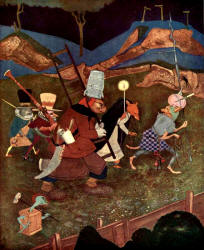
The History of Reynard the Fox, a French narrative which developed between 1170 and 1250, illustrates the preoccupations of the peasant classes with subsistence and survival. It is a compilation of fairy tales or “branches” written by over twenty writers, whose styles, personalities and talents are discernably different. As a parody, it mocks and ridicules epic and chivalric literature, illustrates politics and the daily life of the time, as well as the all-pervasive obsession with food among the ordinary people. Yet food in medieval literary texts relates also to any sort of intake, be it nutritional, sexual or spiritual, and its necessity for survival and reproduction. When describing basic human instincts, by today’s tastes, the stories are vulgar. The History of Reynard the Fox became extremely popular during the thirteenth century, captivating monks who were fascinated by the adventures of the main character, Reynard, a charismatic and clever fox who draws pleasure mainly from cheating and playing tricks on others and thus is always in trouble. Some indication of how these tales grow may be seen by comparing Reynard the Fox with Disney’s Robin Hood, Warner Bros’ Bugs Bunny, or Roald Dahl’s Fantastic Mr Fox.
There is no sign of anthropomorphic characters diminishing in popularity. 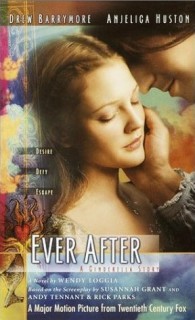 Violence seems to be in fairy tales from all cultures and in all the variations. Even as children we know that some fairy tales have strong undercurrents of violence. You can confirm this by examining classic fairy tales and learning their original versions. Compare with modern re-tellings, some tone down violence, especially of a sexual nature, but some appear to intensify the original implications. Think of the scene of Snow White in the woods. This is quite tame in the Grimm’s version, she is just abandoned and it is narrated in a very dry manner. In Disney, that scene becomes quite nightmarish: we have a terrified Snow White making her way through trees that have become animated, tearing at her clothes as she runs. Why is the violence there? Did the film’s release during the turbulent mid-twentieth Century (1937) make a difference?
Violence seems to be in fairy tales from all cultures and in all the variations. Even as children we know that some fairy tales have strong undercurrents of violence. You can confirm this by examining classic fairy tales and learning their original versions. Compare with modern re-tellings, some tone down violence, especially of a sexual nature, but some appear to intensify the original implications. Think of the scene of Snow White in the woods. This is quite tame in the Grimm’s version, she is just abandoned and it is narrated in a very dry manner. In Disney, that scene becomes quite nightmarish: we have a terrified Snow White making her way through trees that have become animated, tearing at her clothes as she runs. Why is the violence there? Did the film’s release during the turbulent mid-twentieth Century (1937) make a difference?
One important distinction must be made; violence directed at the child versus violence directed against the persecutors of the child. For example, in Hansel and Gretel there is the disturbing scenario of people who should be caring for you trying to destroy you, as when the stepmother wants to kill the children, and their father weakly goes along with the plan. Or have we, in our time, forgotten the effects of starvation on normal family relationships?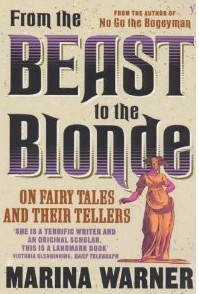
Mention must be made here of the feminist perspective. The role of women in the tales themselves, and as tellers of the tales, cannot be ignored, or undervalued. The book to recommend exploring this perspective is Marina Warner’s From The Beast To The Blonde: On Fairy Tales and Their Tellers (1994).
Fairy tales permeate film culture as well. Think of Ever After: A Cinderella Story (1998) with Drew Barrymore as a latter-day Cinderella. This seems a laudable concept; why not explore the possibility of real events behind the familiar embellishments? There is no doubt of the cultural elasticity and extraordinary resilience of fairy tales. They can be re-scripted, reshaped, parodied or treated with reverence, and they thrive in the old forms as well as in new incarnations.
With Reference also to: When Dreams Came True: Classical Fairy Tales and Their Tradition 2nd Ed.(2007) by Jack Zipes
Fairy Tales, A History by Ruth B. Bottigheimer
See also Post “More original versions of classic fairytales” at dbskeptic.com (his interpretation of the meanings behind the tales) and www.surlalunefairytales.com/ for online annotations of well-known tales.